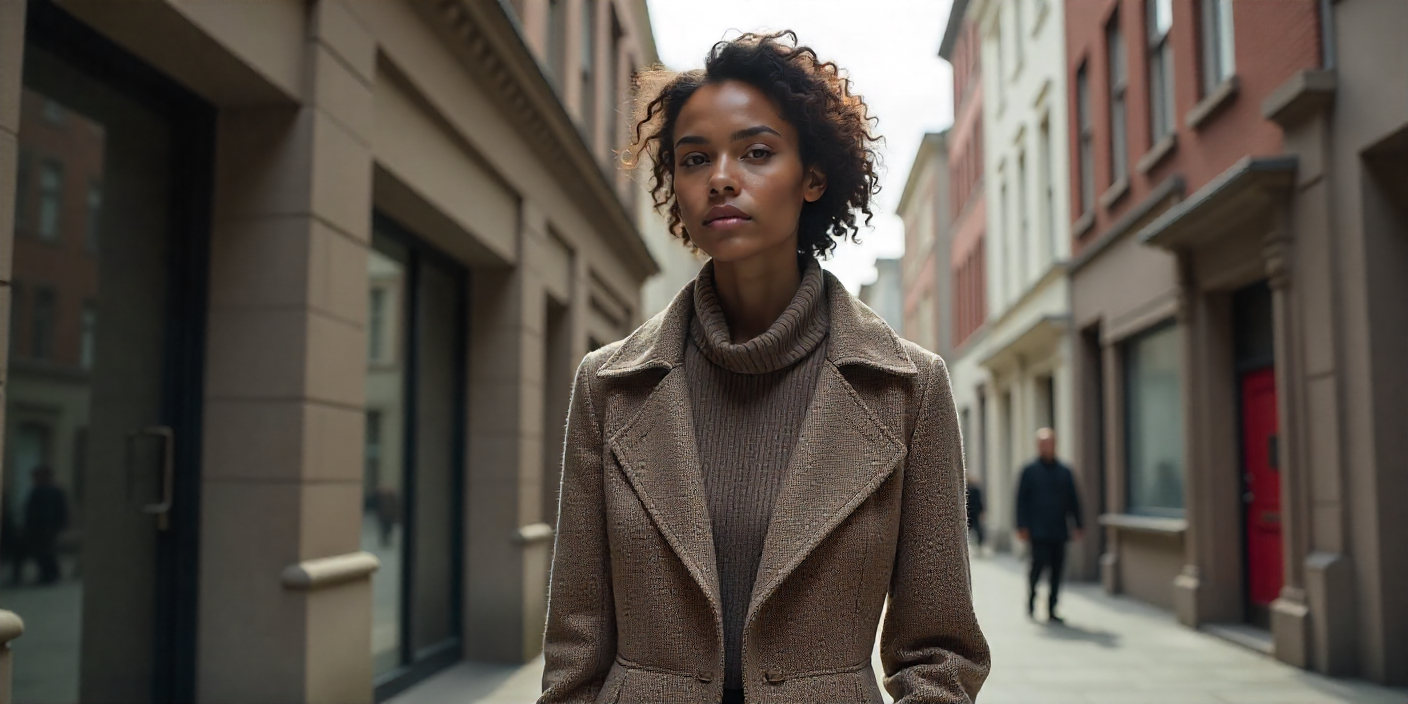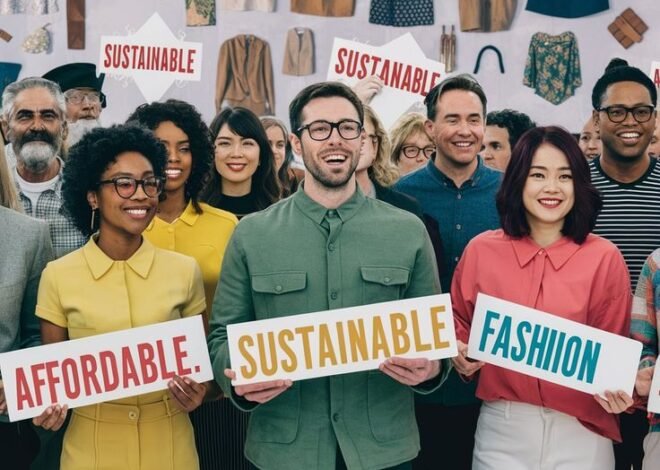
Fashion in Transition: How Style Reflects a Changing World
Fashion is often dismissed as a frivolous pursuit, yet history proves it is one of the most accurate mirrors of society. From the austerity of wartime clothing to the flamboyance of the roaring twenties, what people wear reveals as much about culture, economics, and identity as it does about personal taste. Today, the fashion industry is undergoing a transformation that reflects both global concerns and shifting values among consumers.
This article examines the forces reshaping fashion today—sustainability, digital influence, inclusivity, craftsmanship, and the evolving relationship between brands and their audiences.
1. Sustainability Moves from Trend to Imperative
Just a decade ago, sustainability in fashion was discussed mostly by niche designers and activists. Today, it is at the center of industry debates. The clothing sector has long been criticized for waste, overproduction, and exploitative labor practices. Fast fashion, once celebrated for democratizing style, now faces backlash for environmental impact.
The response has been multi-layered:
-
Slow fashion: A counter-movement encouraging people to buy fewer, higher-quality items designed to last.
-
Circular economy: Resale, rental, and repair services are gaining traction, allowing garments to have extended lifespans. Platforms like Depop and Vestiaire Collective have turned secondhand shopping into a global phenomenon.
-
Material innovation: Designers are experimenting with biodegradable fabrics, lab-grown leather, and recycled fibers. These efforts reduce reliance on resource-heavy processes while pushing creativity forward.
Sustainability is no longer a marketing buzzword; it has become a competitive necessity. Younger buyers, especially, hold brands accountable, rewarding those that align with environmental responsibility.
2. The Power of Digital Platforms
Fashion once revolved around glossy magazines and seasonal runway shows. Now, TikTok, Instagram, and other platforms dictate what trends explode overnight. A single influencer’s styling video can propel a forgotten accessory into must-have status, while fashion houses use livestreams to make collections instantly accessible worldwide.
The digital shift has blurred boundaries between designers, consumers, and commentators. Trends no longer trickle down from luxury runways; they bubble up from online communities and niche subcultures. Aesthetic “cores” like cottagecore, Y2K revival, or dark academia thrive on digital platforms, influencing both mainstream retailers and luxury labels.
At the same time, the metaverse and digital fashion are emerging. Virtual garments, purchased to dress avatars or social media personas, are creating a new revenue stream. Though still experimental, this realm raises intriguing questions: if fashion is a language of identity, how does that translate in purely digital spaces?
3. Inclusivity Redefines Beauty Standards
For much of modern history, fashion projected narrow ideals of beauty—slim bodies, Eurocentric features, youth as the ultimate aspiration. Today, those standards are being dismantled. Brands that ignore inclusivity find themselves out of step with cultural conversations.
-
Size diversity: Labels are expanding ranges, showcasing plus-size models, and acknowledging that style belongs to every body type.
-
Representation: Campaigns increasingly include models from different ethnic backgrounds, genders, and ages. This reflects not just social progress but the purchasing power of diverse groups long excluded from mainstream narratives.
-
Adaptive fashion: Designers are paying attention to people with disabilities, creating garments that combine style with practicality—magnetic closures, adjustable fits, and wheelchair-friendly tailoring.
These shifts are not merely ethical improvements; they are good business. Fashion thrives on connection, and connection requires representation.
4. Craftsmanship and the Return of Artisanal Values
While technology dominates conversations, there is also a counter-current: a renewed appreciation for craftsmanship. In an era of mass production, handmade garments, detailed embroidery, and traditional textile techniques are celebrated as markers of authenticity and artistry.
Luxury houses increasingly highlight heritage—whether Italian tailoring, Japanese indigo dyeing, or Indian handloom weaving. Independent designers, too, build collections around craftsmanship, using storytelling to connect buyers with the human effort behind garments.
This return to artisanal values suggests consumers crave more than convenience. They want meaning and connection, elements often found in clothing that carries a story.
5. Gender Fluidity and the Breakdown of Traditional Categories
Fashion has always flirted with gender boundaries—think of women adopting trousers in the 20th century or the glam rock experimentation of the 1970s. Today, however, gender fluidity is not a passing trend but a structural change.
Retailers are abandoning rigid “men’s” and “women’s” categories, offering unisex collections or simply removing labels altogether. Designers send models of all genders down runways in skirts, suits, and hybrid garments. Beyond aesthetics, this shift reflects a deeper social recognition that identity exists on a spectrum.
Young consumers, especially Gen Z, embrace clothing as a tool for self-expression rather than conformity. This has expanded creative possibilities, opening space for innovation and personal freedom.
6. Fashion and the Global Stage
Fashion is not only local—it is profoundly global. Yet globalization in style works differently than in previous decades. Instead of Western capitals dictating the agenda, voices from Africa, South Asia, Latin America, and the Middle East are increasingly shaping the conversation.
Designers from Lagos to Mumbai are gaining recognition for their unique perspectives, blending traditional fabrics with modern silhouettes. The rise of global fashion weeks, digital showcases, and cross-border collaborations ensures that creativity is no longer centralized.
This global expansion enriches the industry while challenging outdated notions of cultural hierarchy. Fashion is moving toward a pluralistic landscape where multiple aesthetics coexist and influence one another.
7. Consumer Empowerment and Shifting Brand Relationships
Perhaps the most profound transformation lies in how consumers engage with fashion brands. In the past, fashion was dictated by authority figures—designers, editors, luxury houses. Now, the power dynamic has shifted.
Consumers demand dialogue, transparency, and accountability. They want to know where clothing is made, who made it, and under what conditions. Social media enables real-time feedback, and public scrutiny can amplify mistakes as quickly as successes.
This new landscape requires brands to be more than producers of garments—they must be storytellers, community builders, and cultural participants. Successful labels often feel less like faceless corporations and more like movements with values and identities aligned to their audience.
8. The Future of Fashion: Balancing Innovation and Responsibility
Looking ahead, fashion faces both promise and pressure. The promise lies in technology—AI-driven design, 3D printing, smart fabrics, and virtual experiences that could redefine creativity. The pressure comes from environmental challenges, overconsumption, and the responsibility to foster inclusivity rather than exclusion.
To thrive, the industry must strike a balance: embracing innovation without losing touch with heritage, pursuing growth without ignoring sustainability, and amplifying voices that once went unheard.
Conclusion
Fashion has always been more than fabric and thread. It is a cultural language, an economic powerhouse, and a personal expression. Today’s transformations—sustainability, digital influence, inclusivity, craftsmanship, global diversity, and consumer empowerment—are not isolated trends but interconnected forces reshaping how we think about clothing.
In the coming years, style will continue to serve as a canvas where society paints its values, conflicts, and aspirations. To understand fashion is to understand the world we live in—and the world we are building.


